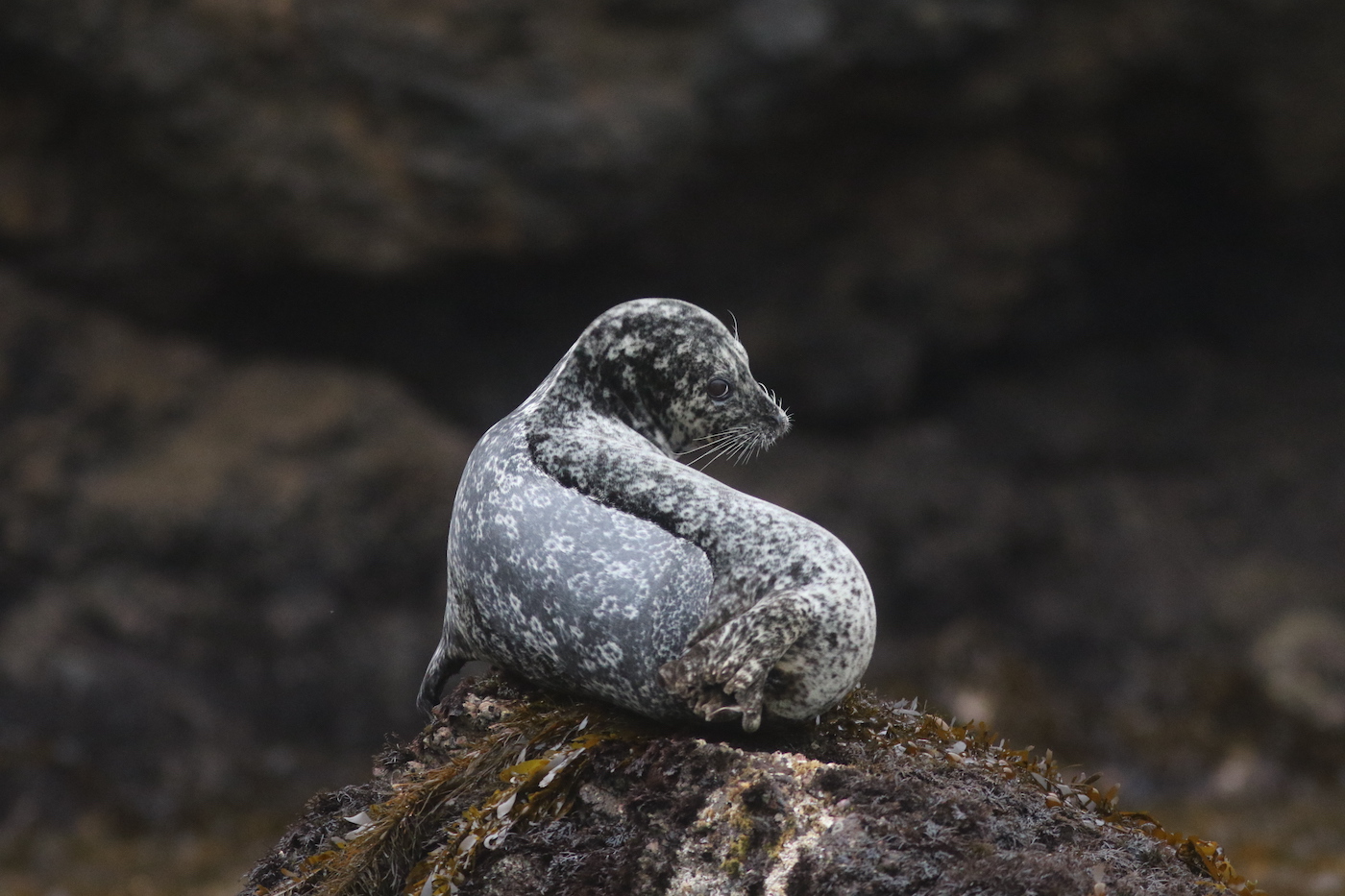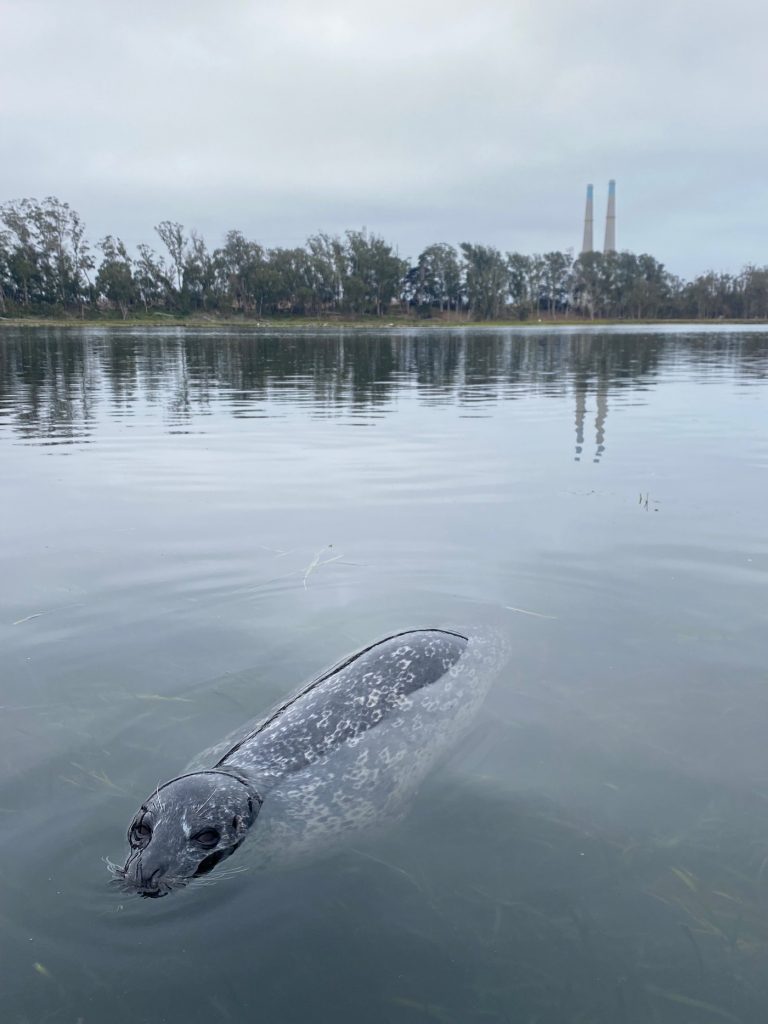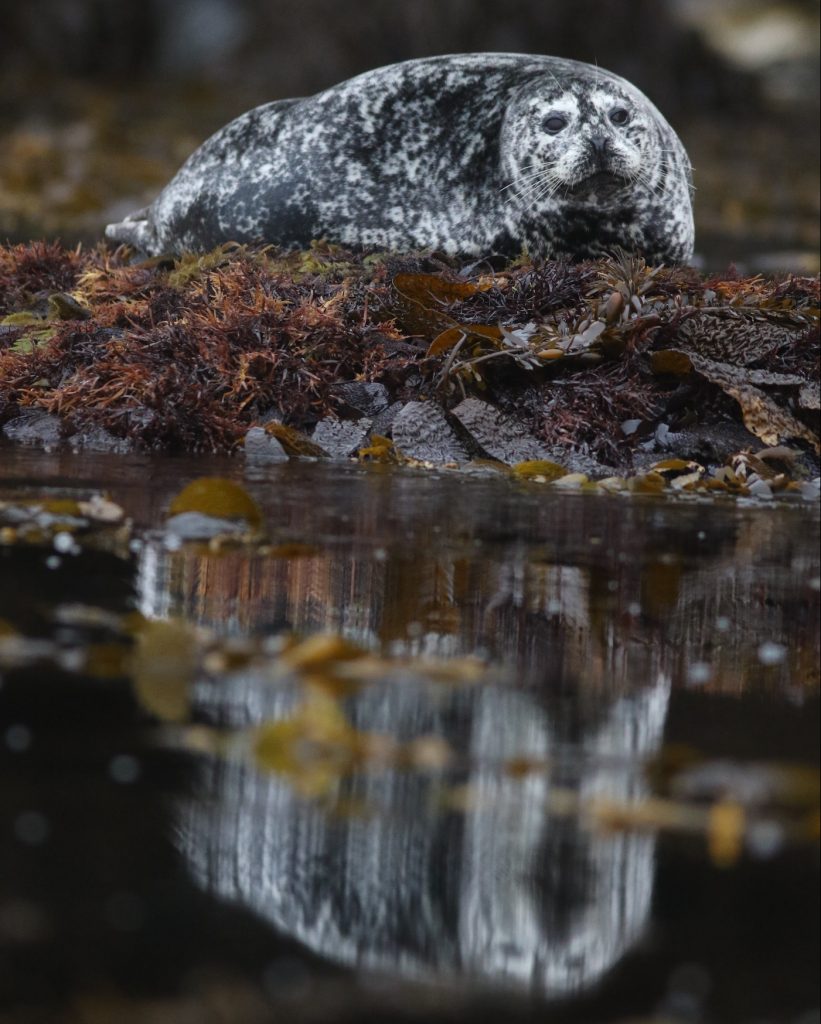Staying Close to Home

As my leg dangled off my kayak and into the ocean, I waited to see how curious this adult harbor seal really was. It had been circling the flotilla of kayaks, displaying curiosity mostly seen from their pups.
Suddenly, the adult approached. It decided to use my heel for a scratch post. Back and forth it went, rubbing its muzzle against my well-calloused heel. After several rubs, it swam off but remained inside the gaping sea cave we were all sitting inside of on Santa Cruz Island, the largest isle off the California Coast.
A few minutes passed, and then the adult returned to rub the other side of its muzzle. Everyone in their kayaks were stunned, amazed, and enjoyed the attention we were receiving from a very docile harbor seal.
Homers

Harbor seals don’t get out much, meaning they are loyal to their favorite beaches, rocky outcroppings, and sea caves, which means they don’t venture too far away from home. They stay with the same resting, haul-out, and birthing sites. Thus, they will spend their entire lives along the same stretch of coastline. Their average lifespan is 20 to 25 years.
There are approximately 20,000 harbor seals along the California Coast — about 5,000 of which are in Southern California, most of these residing on California’s eight Channel Islands. They enjoy sandy beaches and cobbled shores, sometimes performing what appears to be a yoga pose or a plank on barnacle-encrusted rocks. Harbor seals must “haul-out” (come out of the water) on land between seven to 12 hours each day. It’s necessary for harbor seals to maintain their body temperature (thermal regulation) as they wallow in the sun. They’ll dry one side and then kind of hop and roll to dry their other side.
Harbor seals come in an array of colors, varying from white or silver-gray to black or chocolate brown. Just about every animal possesses spots on their fur. Colors and spots are unique to the individual and can be used to identify individual seals. They blend in well with their environment. Sometimes, if they don’t move, they appear like another rock.
Within their home range, harbor seals have the amazing ability to dive deep for their food. They can reach depths of 1,500 feet and can stay under water for up to 40 minutes as they hunt for fish, cephalopods, and invertebrates. Harbor seals don’t drink water. Instead, they metabolize water from their food. The average dive of a harbor seal lasts between three and seven minutes. Their lungs collapse when they dive, their heart rate slows dramatically, and blood flow to some organs is restricted. In this way their bodies conserve oxygen.
Although they haul-out together, harbor seals do not like to touch each other. Two of their cousins — California sea lions and northern elephant seals commonly pile on top of each other on sandy beaches. Young sea lions even haul-out on the broad backs of tolerant elephant seals. Harbor seals communicate with each other using a throng of body postures as they are the least vocal of all pinniped species. They have a little bit of a yelp as a pup, but are virtually silent as adults, except for the occasional growl.
In the water though, harbor seals can become very rambunctious with one another. On a recent trip paddling Elkhorn Slough in Moss Landing in Monterey Bay, several pairs of harbor seals jostled and wrestled with each other in the shallows, some surfacing with eel grass draped across their faces as they came within a few feet of my kayak.
Bonding

A few years ago, while leading a kayak tour at Santa Cruz Island, one particular grotto had what appeared to be a plastic grocery bag just inside its entrance. I left everyone outside while I paddled to retrieve the plastic bag. When I picked it up, I realized that it was the placenta left by a mother harbor seal.
Still, I brought the placenta outside the cave to show everyone and then I took it back. It’s very nutritious and the birds, fish, and even the harbor seals would eat it. When I returned it, I noticed the mom and pup were off to the right side of the cave, nuzzling in the shadows. The pup was about the size of a football, and it still had the umbilical cord attached.
After the pups are born following a nine-month gestation period, the mothers will nurse their young for four to six weeks. At birth, the pups weigh about 20 to 25 pounds, and although most pups are born on land, the one described above was born in the water. Adult females typically give birth to one pup each year. The pups are well-developed out of the womb and are capable of swimming and diving within hours.







